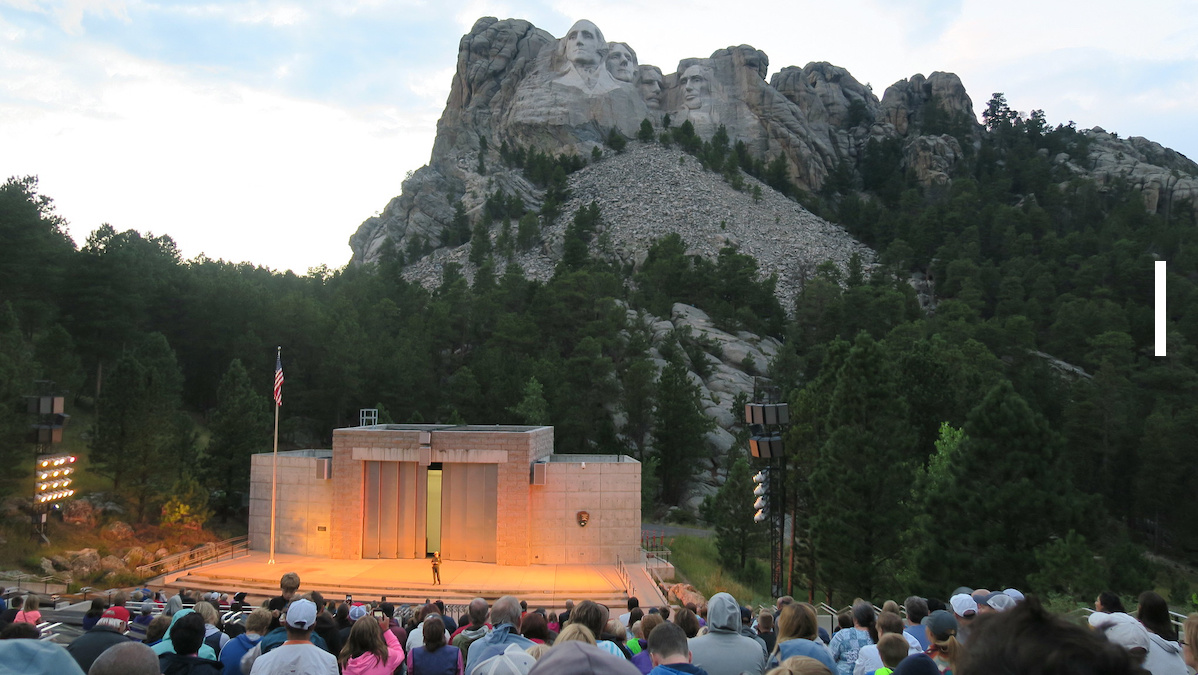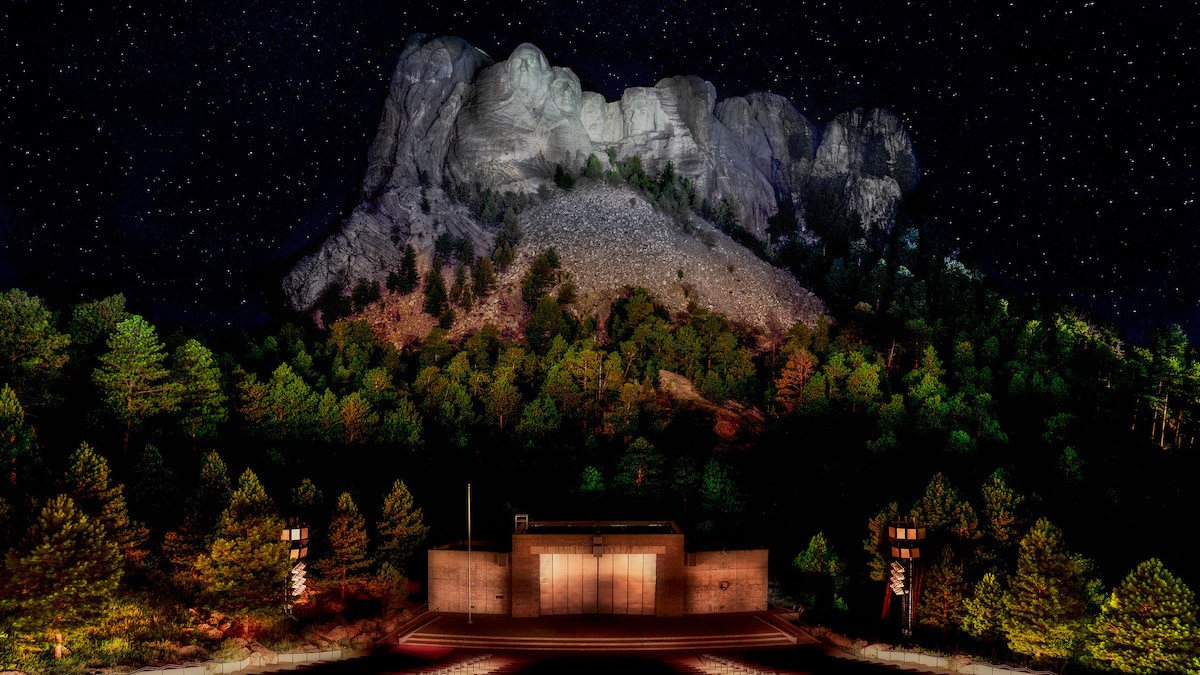
Trump’s Fireworks Show at Mt. Rushmore Is a Dangerous Idea, Fire and Public Health Experts Say

A park ranger addresses the crowd at Mt. Rushmore in Pennington, South Dakota on Aug. 17, 2017. Steve Elliott / CC BY-SA 2.0
For the last decade, fireworks have been banned at Mt. Rushmore due to environmental concerns and public health concerns. President Trump, however, is not somebody who seems to care about either, so he’s planning on going ahead with his fireworks show on July 3 at the iconic site.
As The Washington Post reported, the National Park Service stopped allowing fireworks shows at Mt. Rushmore in 2010, worried that the drought conditions could lead to wildfires. The monument, featuring the faces of four presidents, is surrounded by 1,200 acres of forested lands, including ponderosa pines, and lies next to the Black Hills National Forest’s Black Elk Wilderness.
The ponderosa forest that surrounds the sculpture is a climax community, which is like the apex predator of plants, according to Popular Mechanics. It’s an age-old biosphere that can only be taken down by a catastrophe.
Due to climate crisis shifts in precipitation, the conditions are ripe for a catastrophe. The Black Hills moisture level in April and May was 30 to 50 percent below its long-term average, the Rapid City Journal reported. June has been hotter and drier than normal and the long-range forecasts suggest those conditions will continue until July, as The Associated Press reported.
Earlier this month, the U.S. Drought Monitor recently labeled nearly all of southwestern South Dakota, including most of the Black Hills, as “abnormally dry,” according to South Dakota News Watch.
“It’s a bad idea based on the wildland fire risk, the impact to the water quality of the memorial, the fact that [it] is going to occur during a pandemic without social distancing guidelines and the emergency evacuation issues,” said Cheryl Schreier, who served as the superintendent at Mount Rushmore National Park between September 2010 and May 2019, to The Washington Post.
Bill Gabbert, the former fire management officer for Mount Rushmore and six other national parks in the region, told The Associated Press that shooting fireworks over the extremely flammable ponderosa pine forest should not be done.
“Burning debris, the burning embers and unexploded shells fall into a ponderosa pine forest and ponderosa pine is extremely flammable,” said Gabbert.
He also told South Dakota News Watch that “shooting fireworks over a ponderosa pine forest, or any flammable vegetation, is ill advised and should not be done. Period.”
Dry conditions like the ones facing South Dakota have historically been a driving force behind increased fire activity in the region, according to Darren Clabo, South Dakota state wildfire meteorologist, who spoke to South Dakota News Watch.
“The critical thing is, this is the time of the year when we get most of our rain. And so when we’re starting to see precipitation deficits during the time period when we get all the rain, it does become quite concerning looking forward to our fire season,” Clabo said.
Trump has wanted to have a fireworks show at Mt. Rushmore since 2018, but advisers had successfully steered him away from that idea, according to The Washington Post.
And yet, when he was asked about the risk of wildfire earlier this year, Trump failed to see the large picture of the surrounding forest.
“What can burn? It’s stone,” he said in January, as Popular Mechanics reported.
The state authority distributed 7,500 tickets to the event through an online lottery. While coronavirus cases are surging throughout the country, there is no social distancing requirement for the July 3 event at Mt. Rushmore. Instead, the Interior Department will post signs throughout the park urging visitors to wear a cloth face covering when it is impossible to keep six feet away from others, and it will provide face coverings for all of its employees, according to The Washington Post.

A view of Mt. Rushmore at night on July 4, 2018. Rick Schwartz / Flickr
- 4 Ways to Make Your July 4 Celebration More Eco-Friendly ...
- Trump's July 4 Charade Will Take $2.5 Million Away From National ...
- No Social Distancing or Mask Requirement at Trump's Mt. Rushmore Fireworks Event - EcoWatch
- Beaches Closing for July 4 Weekend Due to COVID-19 Surges - EcoWatch
- Popular Fireworks Emit High Levels of Lead and Toxins - EcoWatch

 233k
233k  41k
41k  Subscribe
Subscribe 